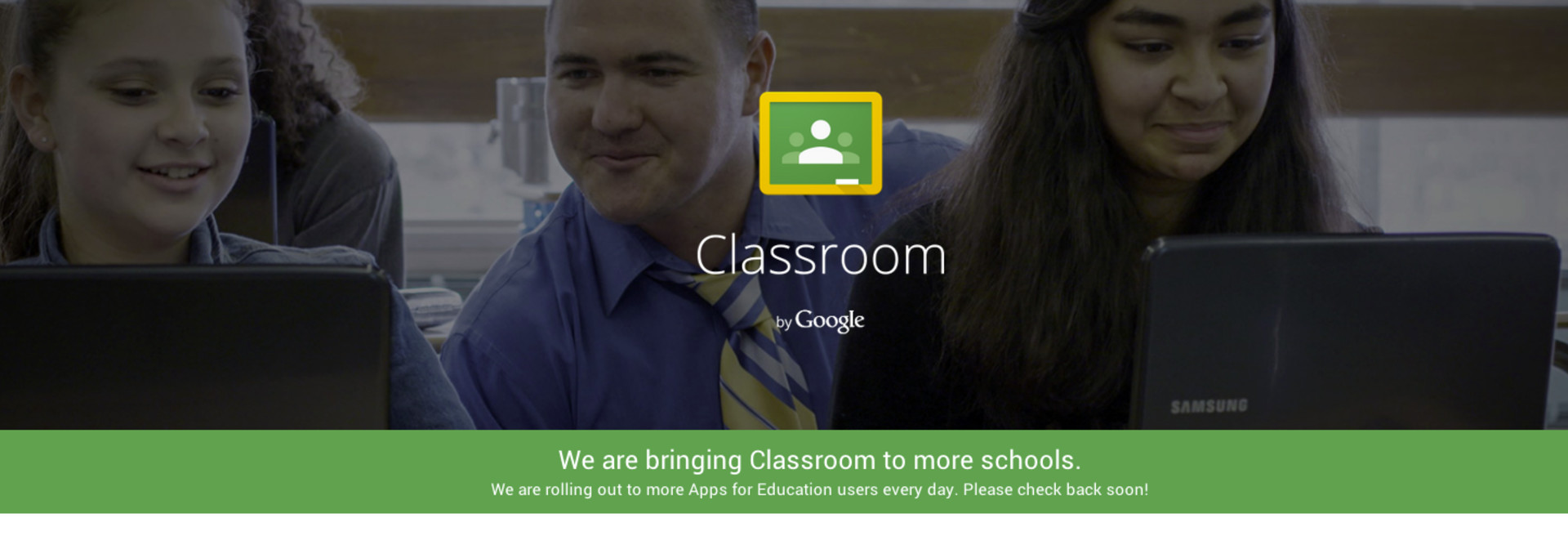Google Opens Classroom's Door
Teachers eager to try out Google's Classroom no longer have to wait. The app officially launched Tuesday in 42 languages worldwide.

Photo: Google Classroom
Google's cloud-based organizer is designed to help take the clutter out of everyday class assignments. Leveraging features from other Google web apps, Classroom lets teachers and students communicate, collaborate, share assignments and get real-time grades and feedback.
For our 2017 look at Google Classroom, check out Google Classroom: Exploring the Benefits for Teachers.
Teachers can create a class and populate it with a group of students, who then find their class by inputting a six-character classroom access code. The app integrates with Gmail and Drive to keep track of all assignments, with subfolders created for each class. These assignments can then be customized and copied to an entire class roster with a few clicks.
The search-engine giant debuted Classroom, the latest free tool in its Google Apps for Education lineup, in May. Since then, Google has been integrating feedback from thousands of educators who test-drove Classroom over the summer.
One of the biggest changes to Classroom is that comments now function as they do in Docs — instantly. Teachers can peek in on a student's progress while they are actively working on an assignment and provide feedback on the spot, instead of waiting for the grading period.
'The Best Technology Gets Out of the Way'
Classroom's product manager, Zach Yeskel, said instant feedback was one of the features educators and students requested most. Furthermore, teachers wanted a way to customize their classroom pages with information like a syllabus, and students wanted a menu that showed them all of their assignments in one location.
Yeskel said the feedback was valuable to him and his team as they try to design a product that works in the background of the lives of teachers and students.
"I think the best technology gets out of the way and lets teachers teach how they want to teach in the way that works best for them," Yeskel says.
Yeskel, a former high school math teacher, says he knows how paper assignments can pile up and get in the way of teachers doing what they actually love. Creating a way to circumvent paper-based assignments was one of the core tenets of Classroom's design.
Pieces of Classroom already existed in different Google apps, but teachers struggled to make features of Drive and Docs function in a classroom setting. While aspects of these apps make sense individually, they begin to fall apart when you take into account 10, 20 often 30 recipients, each with a different attachment.
"The concept of giving out an assignment was too complex for most teachers to figure out how to do well," Yeskel says. "It didn't scale particularly well for them."
Teachers would send out an assignment and then get 30 emails back the following day saying the assignment had been completed, corresponding to 30 entries in their Drive folder. Suddenly a stack of 30 pieces of paper didn't look so bad.
Classroom solves this headache by weaving elements of Docs, Drive and Gmail together to facilitate tasks like sending a copy of an assignment to a roster of students. It's a simple feature given today's technologies, but a truly valuable one to teachers, Yeskel says.
Teachers can watch a ticker in real time as completed assignments are submitted and can then follow up with grades. Missing assignments are clearly visible, so teachers can immediately reach out to students who are lagging behind. And by having a clear view of active assignments, students have little excuse for saying they forgot one was due.
Missing Options
Still missing, however, are options for multiple teachers and varying levels of permissions. Right now, there are teachers and there are students. Teacher's aides and support staff don’t have many choices to participate with Classroom as it is. Solving that has proved to be a complex problem, Yeskel says, but they’re working on it.
“I see this as just the beginning of where we’re going with Classroom,” Yeskel says. “There’s still a lot that we want to do and a lot that we need to do to make it work well for every teacher and every class environment.”
Visit classroom.google.com to try out Classroom. The app scales to work on desktop and mobile devices and is free for Google Apps for Education users.









